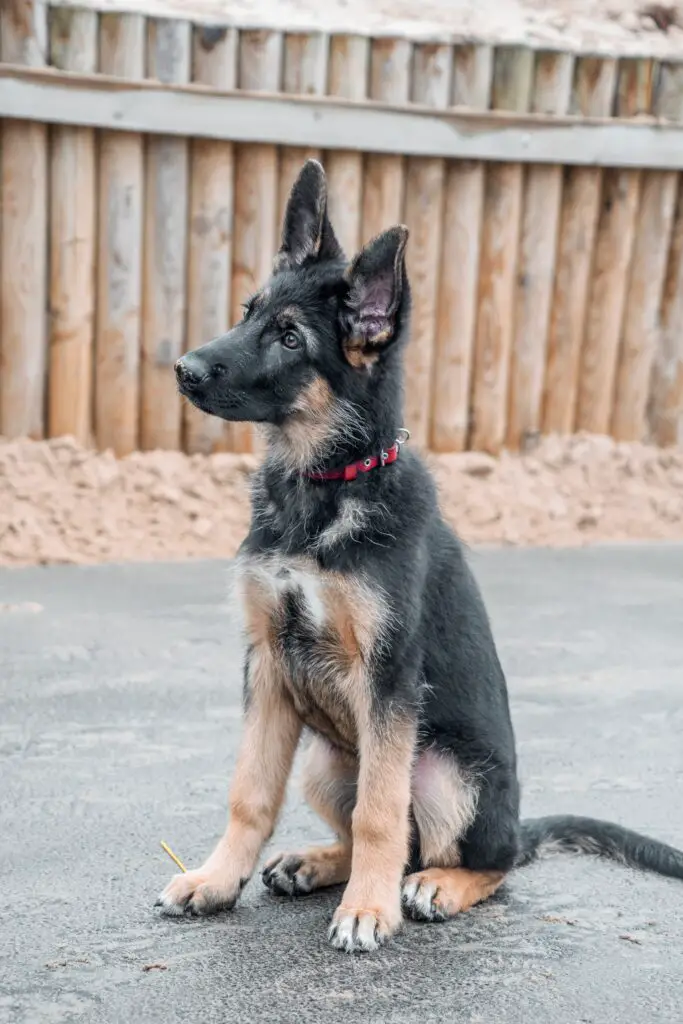We live in a global world.
We move, and we want our pets to move with us. Which is fine if that’s only twenty-five miles away or if it’s within driving distance. Or when you’re traveling with smaller breeds, but what about flying with a large dog in the cabin? Can owners fly with big breeds? Or do large dogs always have to go in the plane’s hold?
Flying with a Large Dog in the Cabin – Is it Possible?
The short answer is no.
Large breeds can’t fly inside the cabin. Weight limits vary airline-to-airline (and we’ll include some examples below), so there may be some wiggle room with small-to-medium dogs. Realistically, though, larger dogs can’t fly in-cabin with their owners. Owners can’t buy them a seat, either.
That’s not the answer you wanted to hear. The thought of putting a dog in an aircraft’s hold will scare some owners. That’s completely understandable.
There are some exceptions. We’ll include those below, along with some tips for flying with dogs in the hold.
Is My Dog Too Big to Fly in the Cabin?
To travel in the cabin dogs must fit inside soft-sided carriers that can fit under a plane seat. This automatically rules out bigger breeds. You can’t fit a Labrador or Alsatian under a plane seat. According to Travel and Leisure, that means nothing exceeding 18 inches x 14 inches x 8 inches. Airline regulations vary when it comes to flying with dogs in-cabin. Always check before booking (and again afterwards). Information can change quickly. What’s written on blogs and websites can quickly become outdated, so your airline should always be your first port-of-call for information.
Flying with a large dog internationally may also require specific paperwork or a pet passport. Contacting the relevant authority in the destination country will give you the most up-to-date information.
Fly with a Large Dog in Cabin 2021 – Exceptions
There are some exceptions. Although, most dogs won’t qualify as one. Trained service dogs can travel in-cabin. If your service dog is especially large, contact the airline before booking. Service dogs provide support for owners with physical disabilities or with chronic illnesses that require monitoring.
Things are less clear with emotional support animals.
In December 2020, the Department of Transportation changed the rules following a surge of incidents involving ESAs on flights. This included dogs going to the bathroom on planes, pets being aggressive or anxious, and even causing physical harm to passengers and crew. The Department of Transportation recognised that some passengers were using ESA rules to avoid paying for their pets. Passengers were bringing miniature ponies, peacocks, St Bernards onto planes. ESAs don’t have to be trained like regular service animals and airlines argued that they should have the right to refuse passengers abusing the system.
Airlines can now enforce their own policy. They don’t have to carry ESAs if they don’t want to. That’s understandable in examples of abuse, but it’s frustrating for genuine passengers relying on larger dogs as ESAs. If you’re planning on flying with a large emotional support dog, contact the airline but expect to have to prove your need with certification.
Alternatives to Fly In-Cabin
Flying may be the best option for you and your dog. Traveling thousands of miles over international borders can’t be done by hiring a car and taking a few days off work. Putting a dog in the hold may be your only option, but we’ve got some alternative options that may be more suitable for others.
Driving
Driving is the most obvious alternative. It’s less stressful for most dogs (and humans). It also allows you to control the environment: the interior temperature, the flow of air, and rest breaks. You can stop overnight on the way. But most importantly, you can see your dog and respond to its needs quickly and easily. The extended road trips won’t be ideal or possible for everyone, but it does give greater peace of mind than when flying.
Go by Train
You may be able to travel by train. Some companies allow dogs on their railways. It’s worth checking as it’s one way of traveling long-distance without the need for flying. You don’t have to worry about air pressure or temperature on a train.
Taking to the High Seas
Ships can be another option. Cunard’s Queen Mary 2 has a Transatlantic crossing, for example. Dogs stay in kennels on board, and you get to visit them. There’s no veterinarian onboard but dogs are looked after by the crew. It’s not as cheap as flying, but you also get a holiday out of it. Other cruise liners may offer similar trips. Shorter distances can be done with ferries or even a private charter. Traveling between the UK and Europe? Try the Eurostar or Channel Tunnel.
Fly with a Charter Company
Small private charter firms may fly a dog cross-country for a fee. There are even ones dedicated to moving dogs from one place to another. This isn’t a cheap option, but you may feel your dog is safer. Smaller planes can land at very small airfields, too, which may be much closer to your end destination.
If you’re only away for a few weeks or months, you could leave your dog with a trusted sitter, a family member or friend. For some people, it’s an ideal solution. One way of ensuring the dog is well cared for. Other people may not have anyone they can leave the dog with. Long-term boarding is available in other places, too.
Tips for Flying with Large Breeds
Smaller dogs have more choice when it comes to flying. Large breeds don’t. To help make traveling easier, we’ve compiled a list of some of the best tips.
Our biggest piece of advice: prepare in advance. Start looking at your options as soon as possible. This will give you ample time to research airlines, arrange any vaccinations or appointments, pick a travel crate, and prepare your pet for their trip.
Pick an airline as early as you’re able to. Make sure you understand the rules and regulations both before and after you’ve booked. Do the same again before you fly, too. Guidelines and regulations can change quickly and without notice. Blogs and website are great resources but always direct important questions to the airline. The more prepared you are, the less stressful the trip should be.
Some airlines now have a dedicated pet booking service. United Airlines has. This means there’s a customer-based framework in place for transporting pets. This should make the entire process more transparent and easier to understand.
Many airlines won’t transport snub-nosed breeds in the hold or as cargo. This is due to past fatalities during transport. If you have a large snub-nosed breed, consider alternatives to flying.
Picking the correct crate is key. Airlines have different rules that you’ll need to comply with. Some require a certain door mechanism; others won’t allow crates secured with plastic screws.
The carrier has to be a hard crate with enough room for the dog to stand up, lie down, and turn around. It should have LIVE ANIMAL clearly printed on the crate and must include access to food and water. Manufacturers will sometimes advertise their crates as IATA-approved but there’s no such thing. It just means they’re complying with general guidelines but as all airlines are different, compare the dimensions, materials, locking mechanism, etc, with the airline before buying. You may have a crate that’s now outdated so always check. On this occasion, it’s down to the airline as to whether a crate is too small or too big.
The door must be firmly secured but not locked. Airline staff may need to get to the animal.
Line the bottom of the crate with puppy training pads or newspaper. This will help soak up any accidents or spilt water. Owners don’t have the option to clean up poop or pee when the dog is traveling inside the hold.
Get your dog checked by a veterinarian. Make sure your pet is fit to travel. Breed-specific advice can be really useful in preparing a dog. The veterinarian can also advise based on your dog’s behavioral and health history. They’ll also help with vaccination requirements.
Pick the fastest route. The quicker your dog is off the plane, the better you’ll all feel.
Travel outside the hottest and coldest parts of the day where possible. Avoid busy travel periods as well.
Confirm any check-in times in advance. Find where you need to check-in because this may be in another part of the airport. Find out where you need to collect the dog in advance of your arrival, too.
Acclimatising your dog before you go can help reduce stress and anxiety on the day. Taking them to a bus or train station introduces them to many of the sights and sounds they’ll encounter. Better still, put them on a bus or train and take a ride.
Pack lots of treats and reinforce positive behaviour. You want them to see travel as being exciting and enjoyable.
Don’t sedate your dog. Sedation can affect how an animal breathes which is no good during travel. Many airlines also won’t accept a sedated dog. Speak to a veterinarian if you’re worried. Artificial pheromone sprays can help calm an anxious dog.
Put familiar bedding or a toy inside the crate. It should be something that smells like the dog (and you). Creating a secure and safe space for the dog to retreat into during the flight can help reduce anxiety.
Label the crate clearly including the dog’s details and your own. Take a photograph of the crate and your pet. This can help the authorities identify a lost dog. Dogs should be microchipped for this reason, too.
Most airlines tell owners not to feed their dogs within 4-hours of a flight’s departure. This helps reduce the risk of motion sickness and a dog’s need to use the bathroom. Exercising before you leave for the airport can help tire a dog out; it also encourages them to go to the bathroom before you get to the airport.
We hope you’ve found this post useful.
We’re sorry that it may not have been the answer you wanted. Flying with a dog in the hold can be an anxious time for an owner. Remember, thousands and thousands of pets travel that way safely and securely every day. Picking the best airline, doing your research and planning effectively will not only make the trip safer for your dog, but also less stressful for you.
Good luck!

